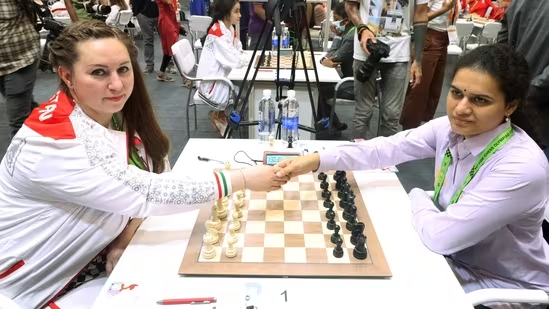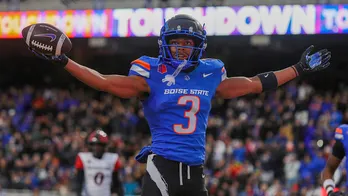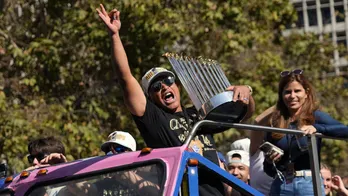Indian women’s chess waits to take off
Among the 15 Indian women divided into three teams at the 44th Chess Olympiad, only Koneru Humpy and Harika Dronavalli have the Grandmaster tag next to their names. They are also the only two female GMs out of a total of 74 the country has produced until now (not to be confused with Woman Grandmasters for whom a lesser yardstick on the strength of the player applies).  PREMIUM
PREMIUM
There is a steady crop of players a rung below Humpy, Harika and the experienced Tania Sachdev—all three are part of the India A team that tops the standings. R Vaishali and Vantika Agrawal are part of the newer lot that is faring well at the Olympiad, but none of the younger girls has made a breakthrough that screams for attention yet. At a time when India’s teenage boy brigade is the envy of the chess world, this contrast is glaring.
It is an issue GM Viswanathan Anand too highlighted before the Olympiad, calling for more girls to follow in the footsteps of Humpy and Harika and spark stiffer competition.
Humpy, 35, is India’s first female GM. She earned the title in 2002, becoming the youngest woman in the world to achieve it, at 15 years, one month and 27 days. Her record was broken by China’s Hou Yifan, the current women’s world No 1, in 2008.
It took nine years for Harika to join Humpy as GM from among Indian women players. The list has remained static since. “Humpy and Harika have been around since the 2000s. Since then, there have been many talented boys. Among the girls, there has just been a handful of players coming through. There is a gap,” said WGM Aarthie Ramaswamy. Along with her husband RB Ramesh–a GM and noted coach–she runs the academy Chess Gurukul in Chennai where R Praggnanandhaa, 16, and elder sister Vaishali, 21, train.
As the pre-eminent woman player in India, Humpy is perhaps best placed to talk about this situation.
“We need to give special attention in training the girls in a proficient way and ensure they have more exposure to tournaments. Vaishali is doing well. Vantika is doing well for India B. But unless girls get the right kind of professional training, it is very hard to improve the current situation,” Humpy said.
The gulf in performance between male and female players holds true globally as well. Only 39 women have achieved the GM title out of a total of 1,983. That the number of registered women chess players in the world hovers between 10 and 11 % of the overall number contributes significantly to this imbalance.
“The issue is not just with our country. If you see the number of women players in the world, the percentage is very less. It is not as easy as for boys. They can travel and play tournaments for months and years. Girls need someone to accompany and take care of them. It is not easy to stay away from home for long durations as well,” she said.
GM Pravin Thipsay feels women players don’t get the kind of backing their male counterparts do. “It is not a question of direct gender bias, but there were some organisations that did not want to recruit women players. For example, former Asian champion Bhakti Kulkarni still doesn’t have a sponsor,” said the 62-year-old from Mumbai. “If you win an Asian title and are still not finding a sponsor, it is an issue. This does not usually happen to male players. Many of the national women’s champions have quit chess much earlier than men because they are not being rewarded adequately.”
GM Vishnu Prasanna, who trains D Gukesh—the standout youngster in India right now—said: “Perhaps women should play in more open events. The competition is very different. I would recommend playing in open events to whichever woman player I meet, so that you are challenged enough. There are only so many events you can play in a year. So you have to choose properly.”
Easier said than done. At the Olympiad, only 13 women are in the open category. Anand considers this progress, though he admits that navigating the situation is complex.
“This already represents some growth. I don’t know what specifically can be done,” Anand said before the Olympiad started. “We need a women’s championship because otherwise too few of them get to play in the first place. But if you have a women’s event, it becomes separate. Hopefully, the gap will close. Mainly, we need to get more women to play the game.”
Experience unrestricted digital access with HT Premium
Explore amazing offers on HT + Economist Start 14 Days Free Trial Already Subscribed? Sign In
Disclaimer: The copyright of this article belongs to the original author. Reposting this article is solely for the purpose of information dissemination and does not constitute any investment advice. If there is any infringement, please contact us immediately. We will make corrections or deletions as necessary. Thank you.







